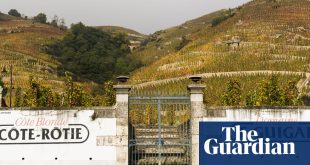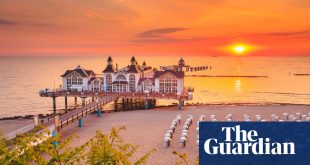I’ve walked only a short way along the small, winding lane leading to Llanthony Priory, but the air is fresher, the noise of the main road ebbs away and I have a strange but not unpleasant feeling that I am passing into a different world. Unusually for this part of the country, this valley, which is peppered with gorse, hawthorn and bracken, was cut by a glacier, so its walls are high and steep. There is little but sheep here; the Vale of Ewyas is remote and wild with a distinct lack of civilisation, something that has attracted visitors for centuries.
One such visitor, a knight called William de Lacy (related to the wealthy Norman landowner family), came here in the early 12th century, so one story goes. In William’s time and right up until the second world war, the valley was densely wooded. De Lacy became lost in the swampy forest and, struggling to find his way, he chanced upon a small, sixth-century ruined chapel, said to be the hermitage of Saint David, the patron saint of Wales. Legend has it that the experience moved De Lacy so much, he renounced his sinful ways and took up a life of prayer and contemplation, choosing to remain in his armour for the rest of his life to “harden himself from temptation of the devil”.
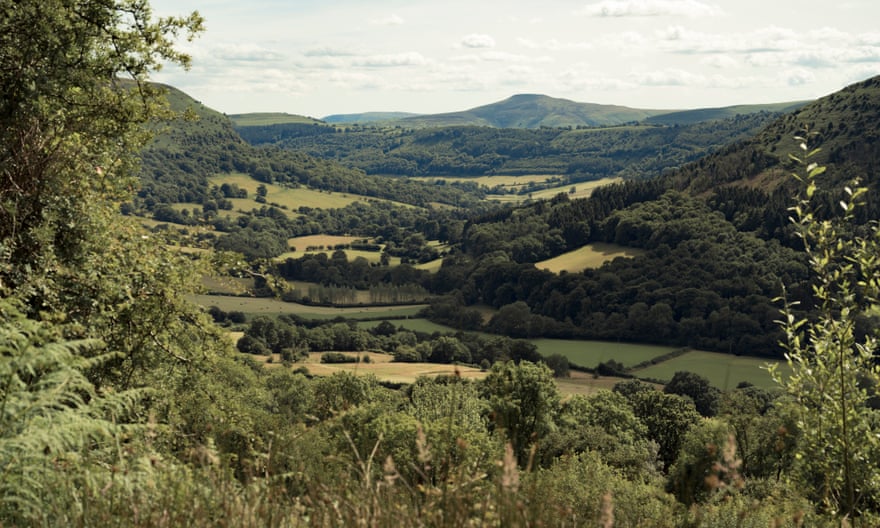
Quite naturally for the time, this behaviour attracted others including Erinisius, chaplain to Queen Matilda, wife of Henry I. Within a decade many more had arrived and Llanthony Priory was established in 1118. With the Archbishop of Canterbury firmly under the belief that Benedictines were too lazy and Cistercians too greedy, Erinisius, De Lacy and their merry band of religious zealots became Augustinian canons, black-clad preachers, rather than grey or brown-clad monks.
A period of chequered fortunes was to follow. In the mid-12th century, it was taken over by local “barbarians” who were scandalously reported to have had parties at the priory, with drunken orgies and frivolous dancing. By about 1275 the canons had restored order and, thanks to patronage from the De Lacy family, there was more money to spend on improvements. Much of the building we see today was constructed at this time with the work taking a little over 50 years. There was little else like it around and for some time it was said to be among the most magnificent buildings in Wales.
The walk begins round the back of the ruins, following the Beacons Way signposted to Hatterall Hill. The barman called this well-trodden footpath the Ale Path or Rhiw Cwrw. Once a route linking the priory to the outside world, it was used to transport ale in and out of the valley. As I pause for breath, I think of the donkeys and ponies loaded with barrels hiking up the hill.

This is the hardest part of the trail: the path rises steeply up the fields and into the woods and you’ll feel your blood pumping as you climb. Thankfully, once through the trees, it eases to a slow, steadier incline. The grassland and hedgerows of the lush valley floor slip away as the surroundings become far wilder. At the height of summer the hillside is thick with juicy bilberries and it’s impossible to come away without deep purple stains on your hands.
Once completely up out of the valley the walk continues north-west along Offa’s Dyke path, high on Hatterrall Ridge and marking the border between England and Wales. The landscape feels alive as rabbits dart out from hiding places, kites swoop overhead and the incessant song of meadow pipits sounds like a benign car alarm among the swathes of bilberries. From this vantage point you can clearly see the route the ancient glacier would have taken to carve out this U-shaped valley of the River Honddu.
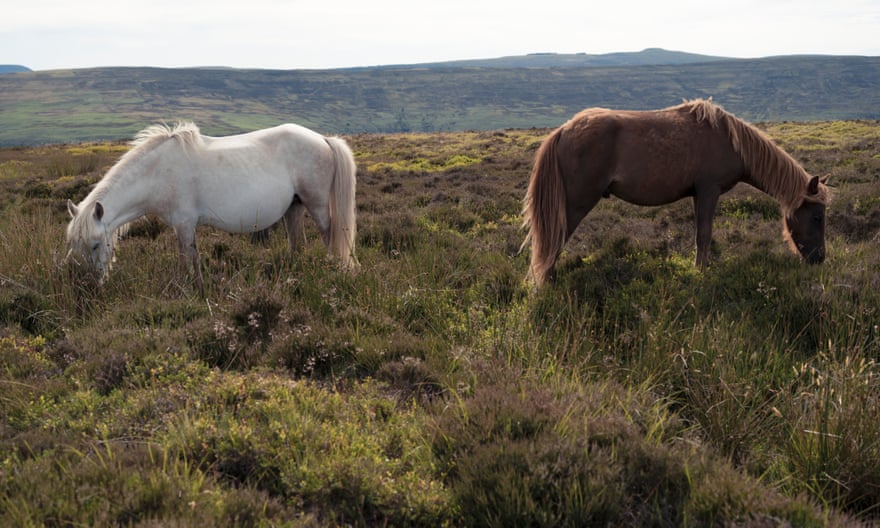
Close to the trig point, I’m joined by wild horses, much to the delight of three Malaysian sisters who have travelled across the country from Essex to be here. Having walked the reverse route they warn of the very steep path back down to Llanthony. At the cairn, 500 metres or so before the path takes a sharp left, the sky begins to bruise a foreboding dark grey. As I descend, feeling the strain in muscles I wasn’t previously aware of, I appreciate being forewarned and, despite the impending rain, take it slowly down the hill.
Towards the end of the walk, I am rewarded with a perfectly framed view of the lonely priory below and am thrown back into that feeling of otherworldliness. It isn’t hard to see why De Lacy and his followers chose to live here far from the hustle and bustle of everyday life. I have certainly taken longer walks but my legs ache as I trudge the last few hundred metres. A drink in the cellar bar is calling me.
Allow Google content?
This article includes content provided by Google. We ask for your permission before anything is loaded, as they may be using cookies and other technologies. To view this content, click ‘Allow and continue’.
Start Llanthony Priory Car Park
Distance 5.2 miles
Time 2hrs 15mins
Total ascent 442 metres
Difficulty Moderate
The pub
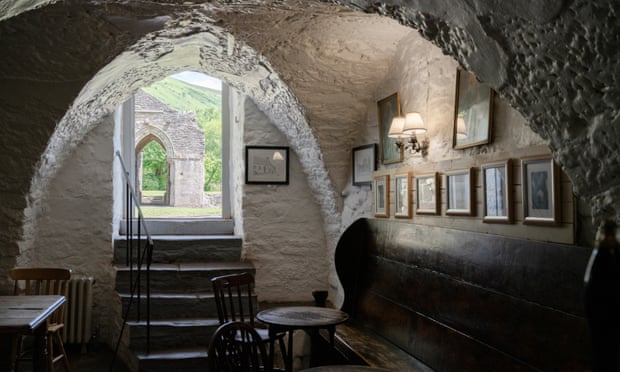
Tucked away on the left hand side of the ruins, the pub is easy to miss. But you’ll find it down a flight of stairs in a 13th-century vaulted cellar. It opens regularly during the summer months but less in the winter, so check the website before visiting to avoid disappointment. As often with remote pubs, it is as much a cafe, shop and ice-cream outlet as it is a pub. It sells guidebooks, tea, coffee and chocolate bars along with more regular pub fare such as bar snacks and soft drinks. Behind the bar you’ll also find Welsh ales, ciders and spirits including the not-to-be-missed Penderyn whisky, a rare Welsh single malt.
I found it refreshing to drink in a pub that hadn’t been refurbished to within an inch of its life: it had a welcoming, no-nonsense atmosphere. The food is as unpretentious as the pub: jacket potatoes, lasagne and chips, rather than essence of foraged mushrooms with kale foam and hand-selected quinoa.
llanthonyprioryhotel.co.uk
The rooms
There is no wifi, no phone signal and no TVs in the rooms: these, for many, are their biggest selling points. As you might expect in a listed building, the decor is quirky and not overly sophisticated. There are no en suites but the rooms are generously sized with comfortable beds and period furniture, including at least one four-poster. The staff couldn’t be more welcoming and there are beautiful views out into the valley.
You cannot escape the sense of history here, with food served in a huge gothic dining room. For those who prefer to stay under canvas, there is camping at nearby Court Farm. The facilities are basic – no more than a tap and toilet – but at £5 a night it won’t break the bank during these cash-strapped times. It’s deep within a dark skies area, and on a clear night millions of stars are visible. Doubles from £110 B&B, llanthonyprioryhotel.co.uk
Dave Hamilton is the author of six books including Wild Ruins, Wild Things Publishing
 Top Naija News: Nigerian News, Breaking News Nigeria and World News Top Naija News is a daily news publication in Nigeria, delivering the latest breaking news in Nigeria and around the world.
Top Naija News: Nigerian News, Breaking News Nigeria and World News Top Naija News is a daily news publication in Nigeria, delivering the latest breaking news in Nigeria and around the world.

